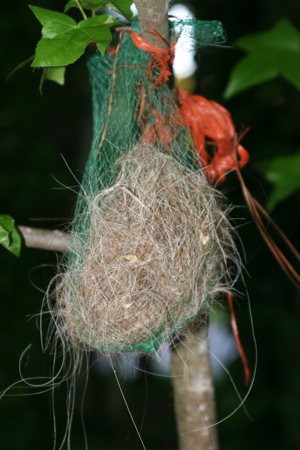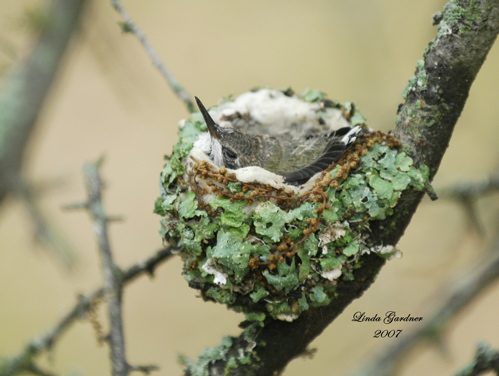-
nesting materials that could pose hazards?
There was a pretty strange video and some interesting discussions on one of the birding forums where I’m subscribed. For the above title to make any sense at all, you’d need to watch the very short video about conjoined robins and the follow-up to the story involving nesting materials. Check it out:
Luckily for the robins, they did make it to a caring vet who performed the surgery to separate them pro bono. Turns out genetics were not the culprit, but a small piece of plastic thread in their nesting materials. After they hatched, it had caused there skin and wings to fuse to it, thus developing together. The prognosis for the larger bird is good and he will be released back into the wild. For the smaller robin, his life may be lived out permanently at the rehab center if he survives. His wing needed to be clipped in order to separate the two birds.
Our discards are killing wildlife… especially birds. Fishing line and similar materials pose a life threatening hazard to all wildlife and in particular wild birds. Sadly but surely we kill the planet that sustains us all.
-
Offer Nesting Materials Many Ways
For most of April and May, we’ve been giving away free nesting materials with all orders. Throughout most of the spring season, you can encourage birds to take up residence at your place with nesting materials. Different species build their nests accordingly, so we’ve used varied materials to make up the packages.
Shown here is a Pop-Outz suet feeder, and we’ve been giving them away too! The recycled plastic makes a perfect container for offering the nesting materials. Suet is always a welcomed treat for both resident and migratory birds and the Pop-Outz is a super fun way to serve it. No-melt suet or doughs are made specifically for warm weather feeding and the energy boost really helps out migratory birds after a long journey.
But back to the nesting materials, ours were comprised of horse hair (from mane, tail and body), decorative mosses, like Spanish, sphagnum, and the yellow straw-like stuff, feathers and strips of aspen wood. Aspen fiber happens to be another favorite among North American birds, and is found in many of the commercial nesting material kits.
A mesh produce ba
g from the grocery store (like the kind apples come in) also works great for offering nesting materials, and we use them around our yard. Things like the Birdie Bell are also wonderful for nest materials, plus year-round feeding too.
Entice birds to take up residence at your place by creating a suitable and friendly environment. Food, water and shelter are the basics, be it natural or man-made… the birds will thrive and flourish!
- Bird Accessories, Bird Feeders, Bird Nesting Materials, Hummingbird Feeders, Nesting Material, Uncategorized, Window Hummingbird Feeder
add this near your window hummingbird feeder
With the hummingbird migration in full swing, it won’t be long before the tiny sprites are in your neck of the woods. Already spotted in LA, SC, TX and all along the Gulf Coast, its just a few short weeks before they’ll infiltrate up the East Coast and Midwest, ultimately reaching Alaska, British Columbia and Canada.
Aside from your hanging or window hummingbird feeder, you can further entice hummers with moving water such as birdbath fountains and bubblers, and of course, nesting material.
The Hummer Helper nesting material has been tested and proven to increase the numbers and activity of hummingbirds at your feeders. How you might ask? Because if suitable nest sites are found in your yard, juveniles will also visit feeders, including your window hummingbird feeder. If nectar is always kept fresh, and there’s an enticing water feature, you can bet the same hummingbirds will be back next year! They’re known to practice “site fidelity” meaning that attractive diggs will remain their site of choice the following year. Hummer Helper Nesting Material has even been endorsed by The Hummingbird Society for its effectiveness at promoting nesting by hummingbirds.
Hummingbirds aren’t the only ones who will use this nesting material either, American Goldfinches also adore the white fluffy stuff and will use it for their nesting season in late June through July.
Encourage nesting in your yard through wildlife-friendly habitat. Food water and shelter are the keys, whether natural or man-made. Nectar-producing flowers provide food, while shrubs help with predator protection and provide nesting spots, these will attract many species of wild birds. Water is the best way to attract even more feathered friends too. Mature trees, fruit or berry-producing trees, and even brush piles serve many wild birds well. Never throw out or burn garden debris, if space allows, use it to create brush piles in the back of the yard… your wildlife will thank you for this valuable and natural cover!





